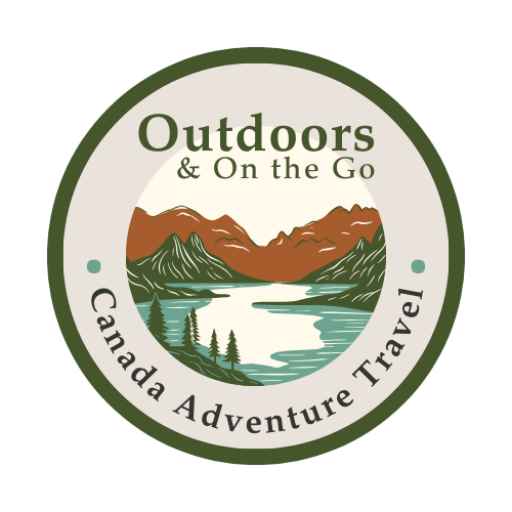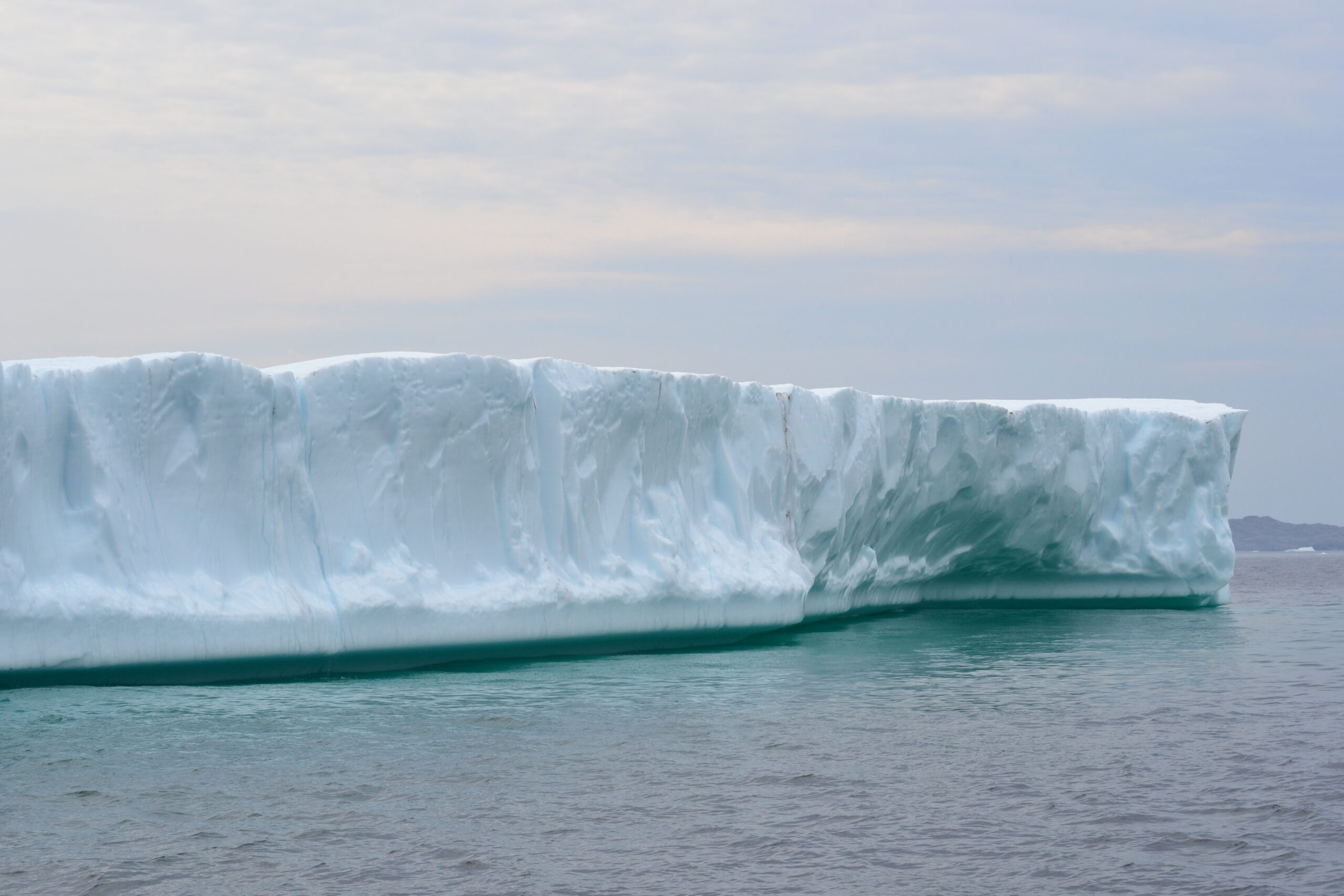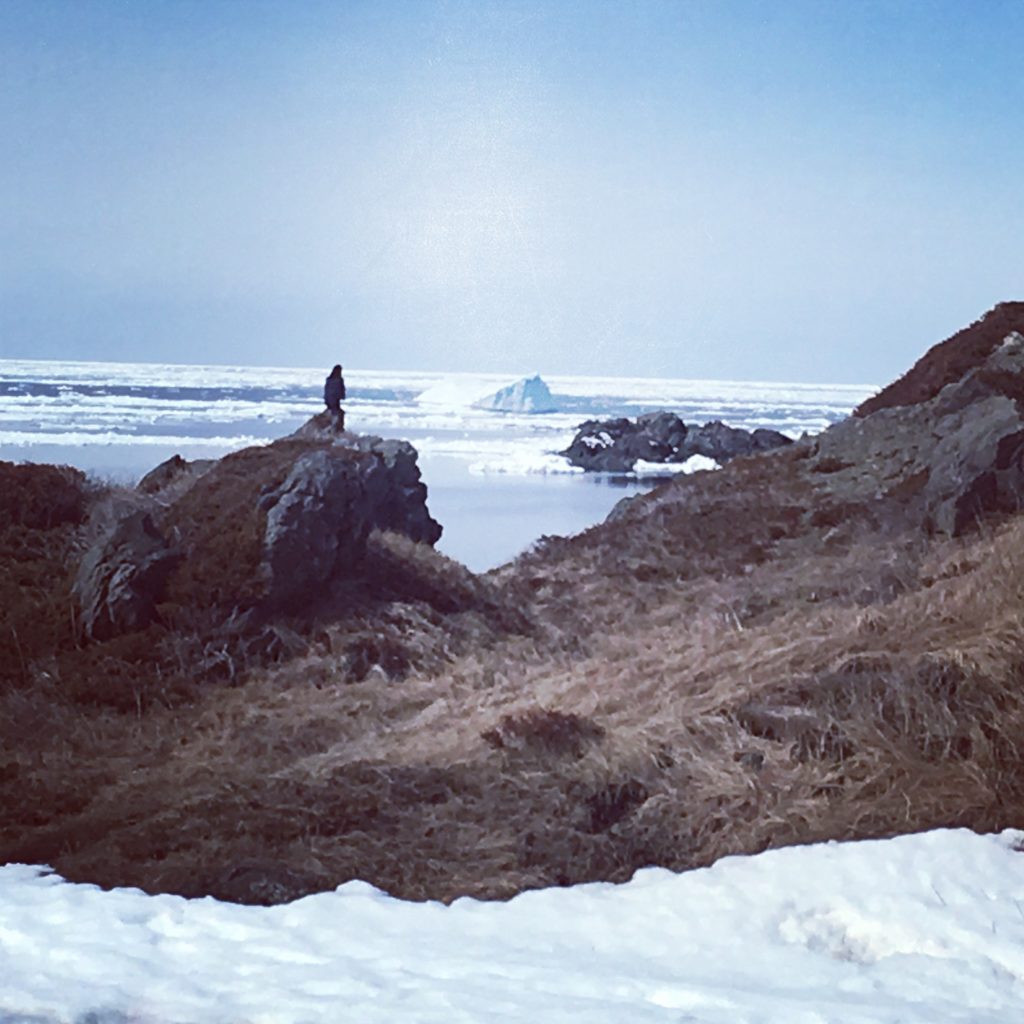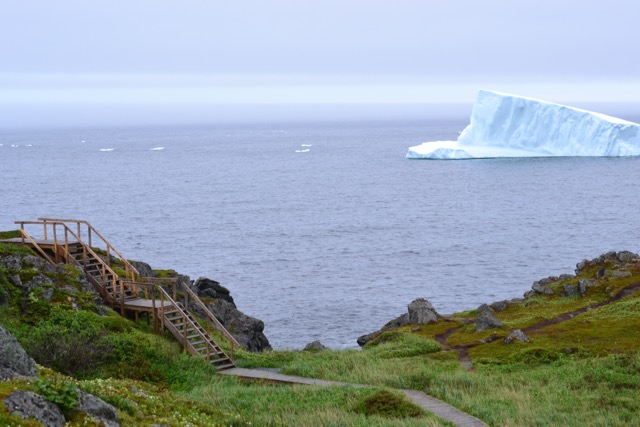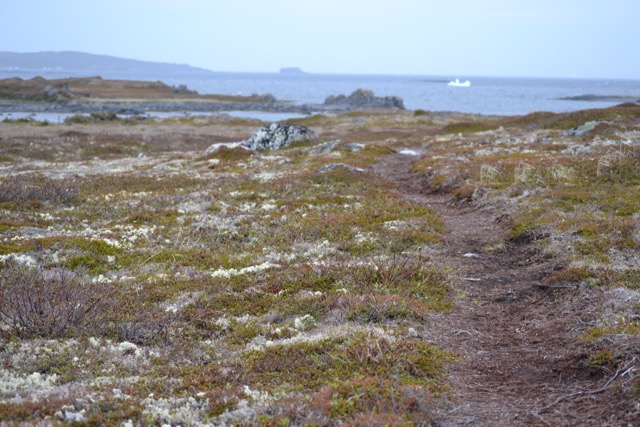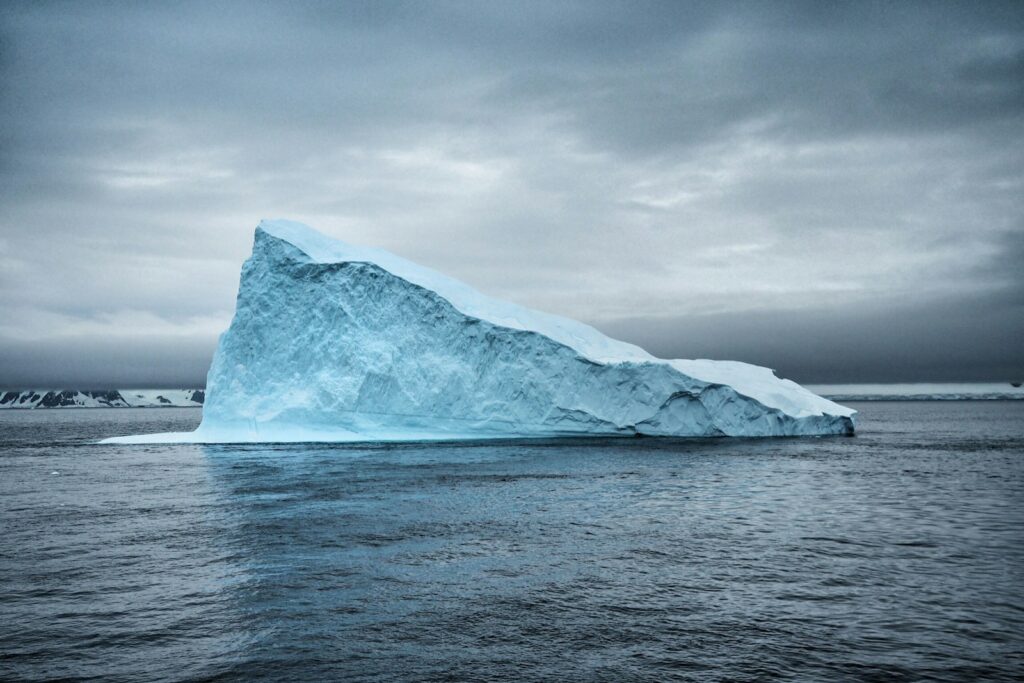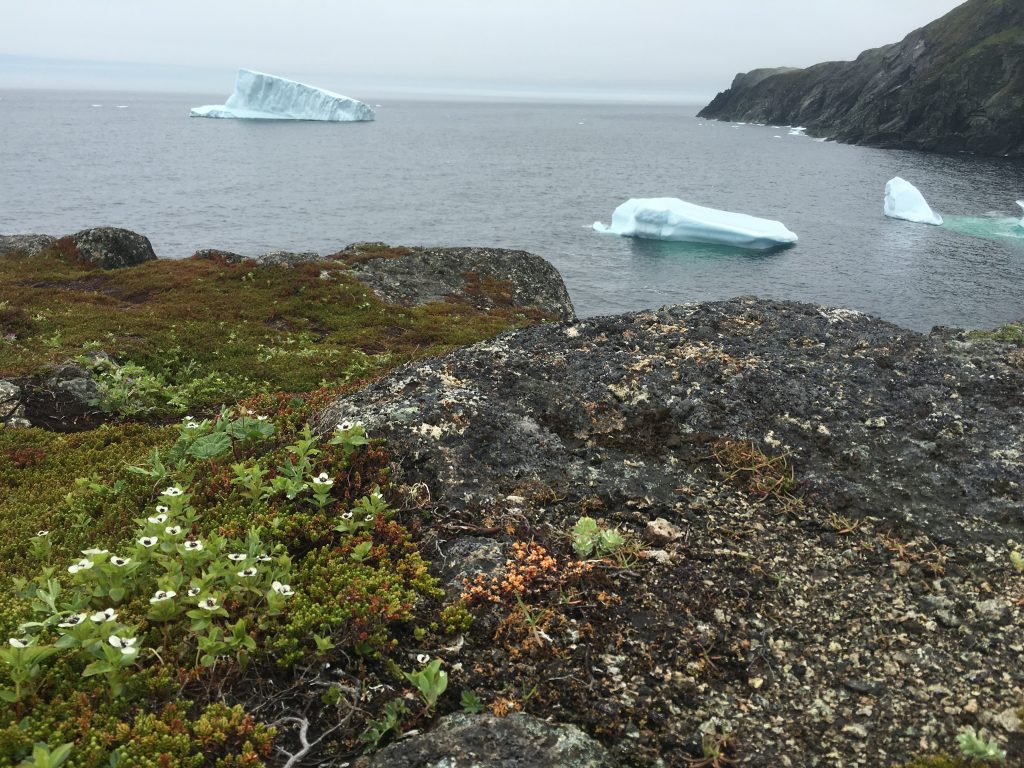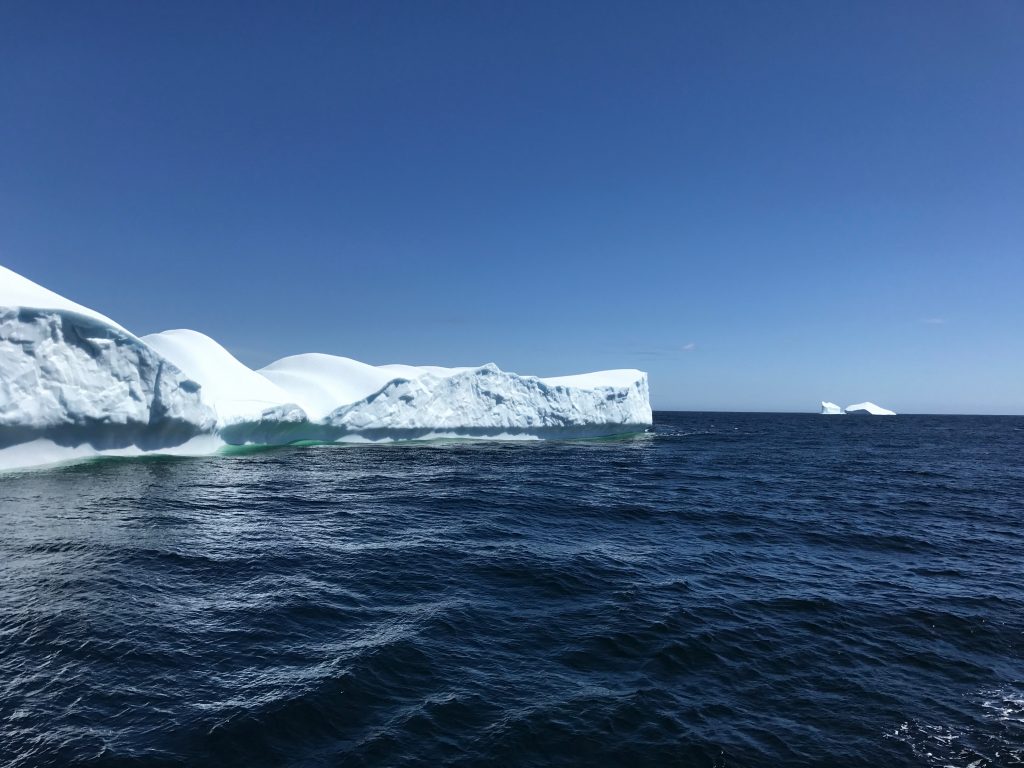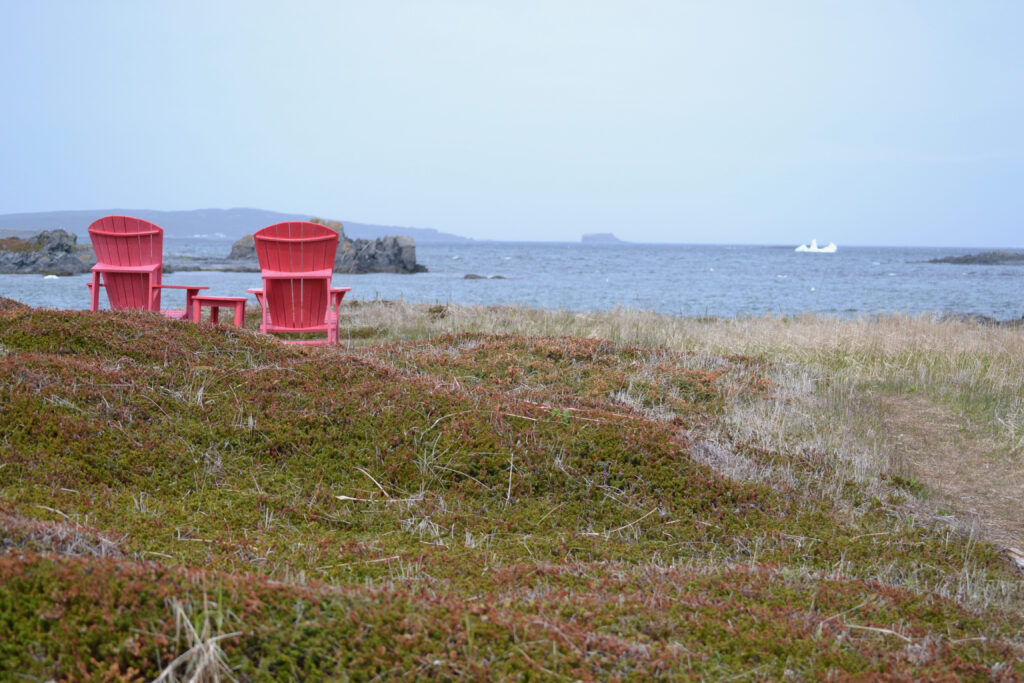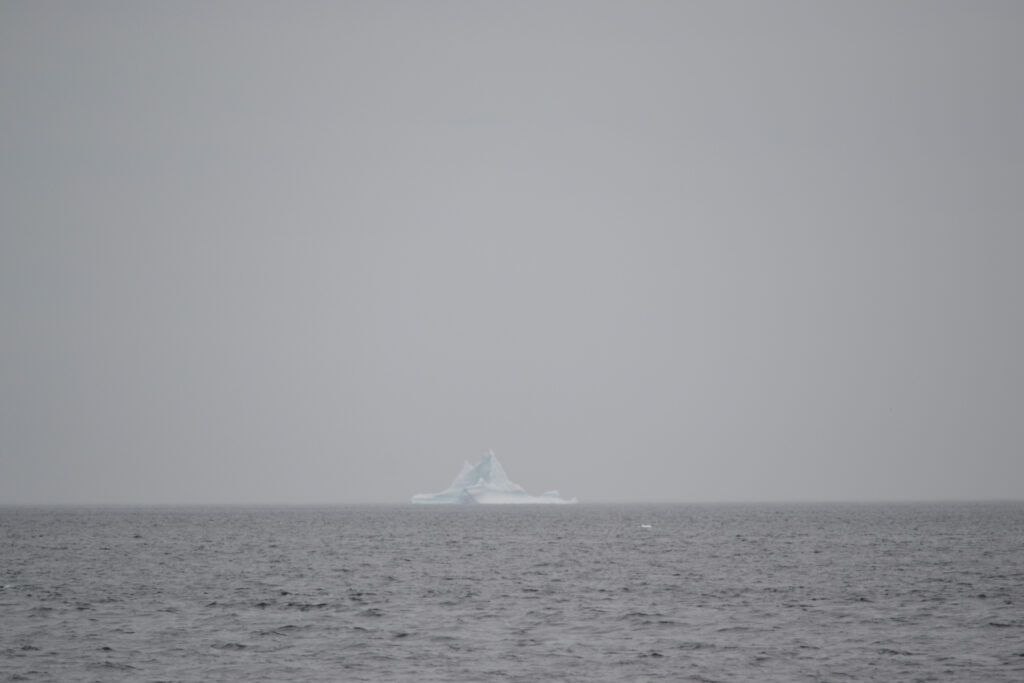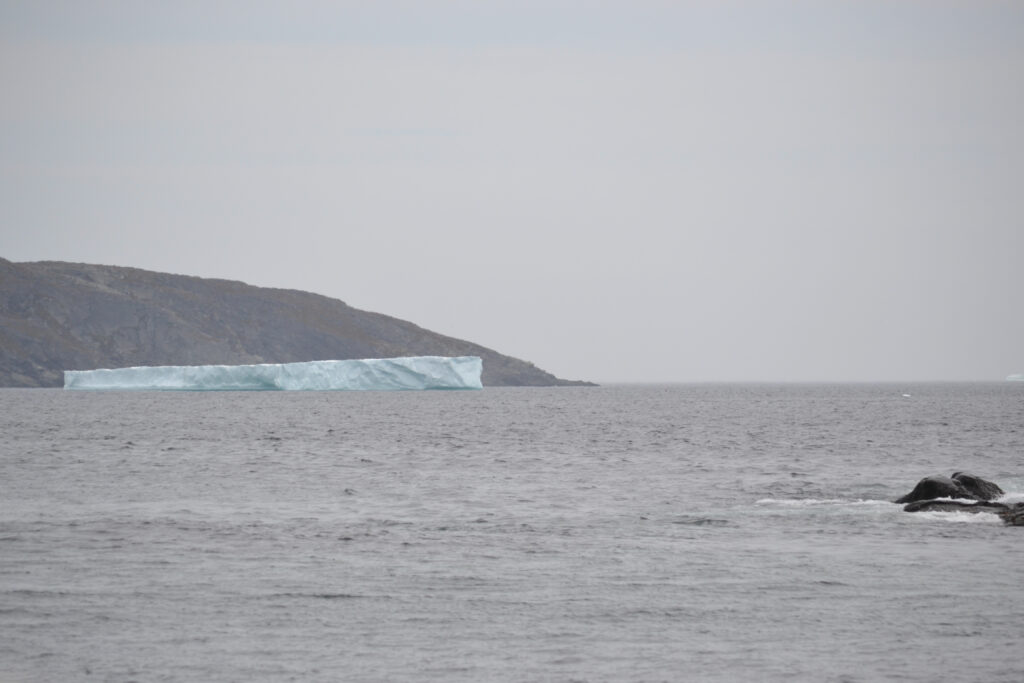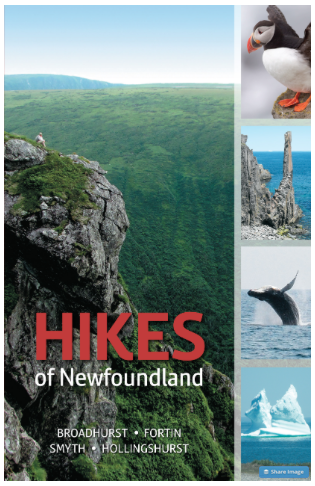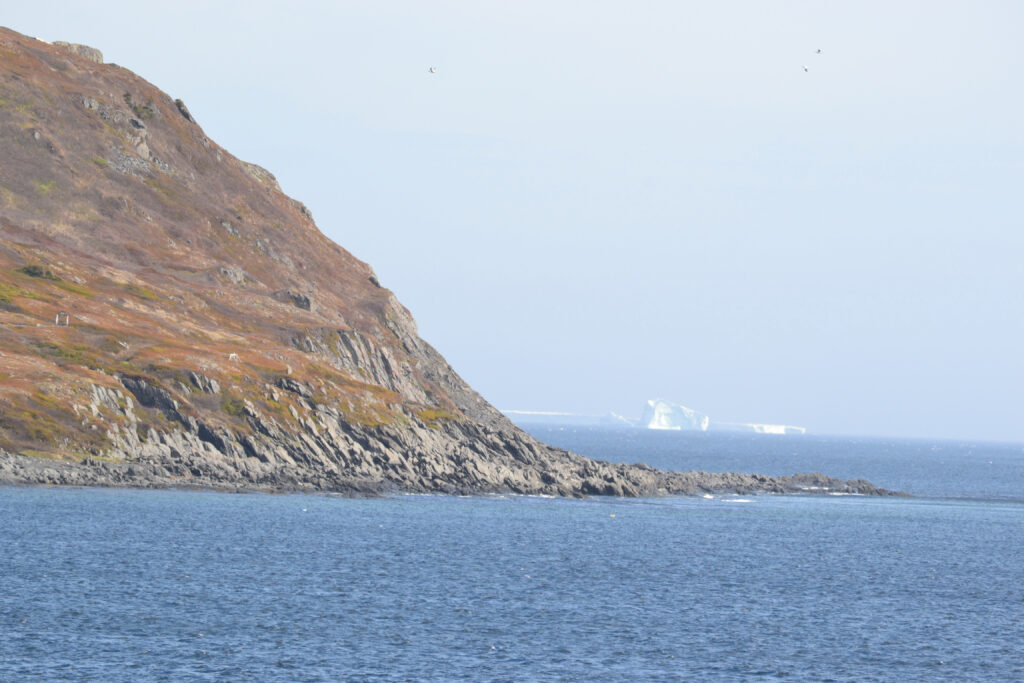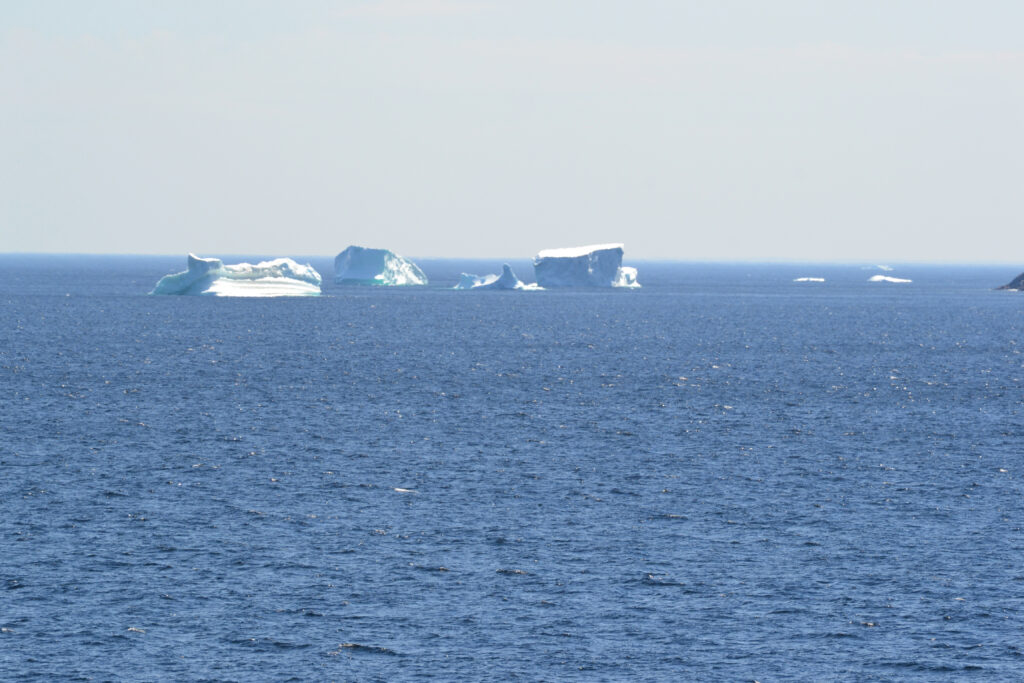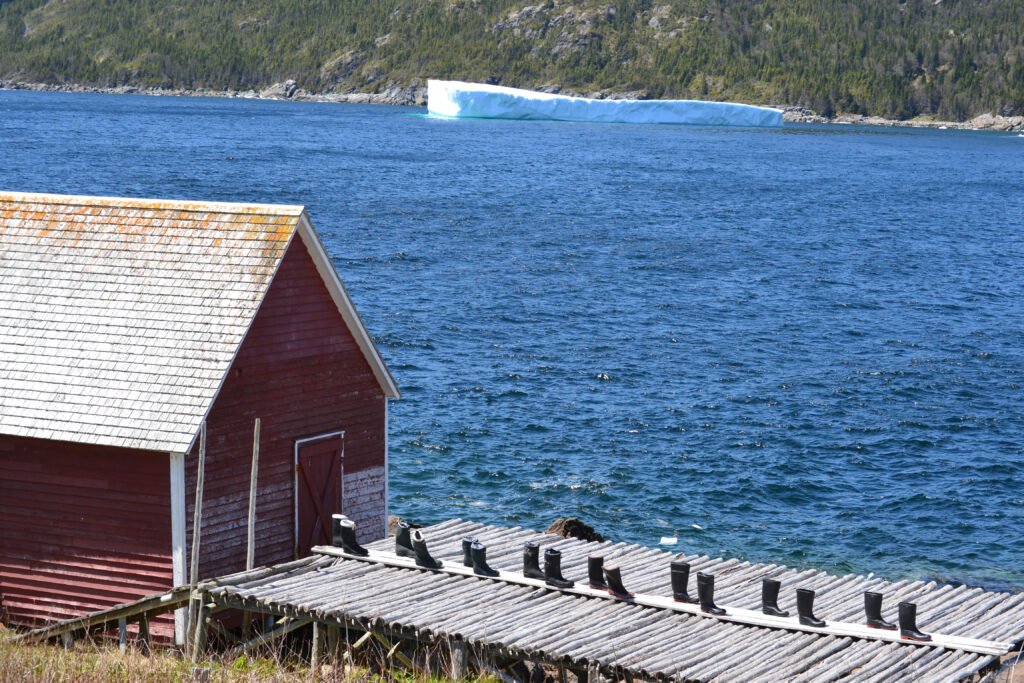Welcome to Iceberg Alley, one of the most mesmerizing natural spectacles in Canada. If you’ve ever dreamed of seeing a massive iceberg drift past a rugged coastline, then Newfoundland and Labrador is your dream destination. Whether you’re planning your first iceberg tour or returning for another season, this guide will tell you exactly where to see icebergs in Newfoundland, when to go, and how to make the most of the experience.
Ads are how we keep our blog free for you to enjoy. We also use affiliate links; if you make a purchase through them, we may receive a small commission at no cost to you.
What is Iceberg Alley?
Iceberg Alley refers to a stretch of ocean along the eastern coast of Newfoundland and Labrador where icebergs from Greenland drift south each spring and early summer. These ancient glaciers break off into the Atlantic and float past communities such as Twillingate, St. Anthony, Bonavista, and even as far south as St. John’s.
Where is Iceberg Alley?
Iceberg Alley stretches from the coast of southern Labrador down along the eastern shore of Newfoundland, ending just below the Avalon Peninsula. This cold ocean corridor is fed by the Labrador Current, which transports icebergs that have calved off Greenland glaciers thousands of kilometers away. These icebergs drift southward along this path during the spring and early summer, making it one of the best places in the world to see these majestic frozen giants.
Notable towns along Iceberg Alley include Nain, Cartwright, and Red Bay in Labrador, followed by the Newfoundland communities of St. Anthony, Twillingate, Bonavista, and even parts of the Avalon Peninsula such as Cape Spear and St. John’s. Because of its vast reach, Iceberg Alley Newfoundland Canada offers multiple access points and scenic spots for both land-based and boat-based iceberg viewing.
Curious travelers often ask, where is Iceberg Alley in Newfoundland? The answer is: all along the northeast coast—just bring your camera and a sense of adventure.

Why Iceberg Alley is So Special
What makes Iceberg Alley truly remarkable is its accessibility. It’s one of the most southerly places in the Northern Hemisphere where you can reliably see icebergs without needing to book a cruise ship or expedition tour. Unlike remote destinations in the Arctic or Greenland, where iceberg viewing often requires significant time, expense, and logistics, Newfoundland makes it possible to see these massive floating glaciers right from the shoreline—or even your hotel window.
This is a rare place where everyday travelers can witness icebergs up close. These icebergs have broken off from Greenland’s ice sheet and drifted thousands of kilometers via the Labrador Current to arrive just off the coast of Newfoundland and Labrador. They appear in bays, harbors, and along rugged cliffsides—often mere meters from the road.
Whether you’re on a short road trip, a hiking adventure, or sipping coffee in a coastal village like Twillingate or St. Anthony, Newfoundland iceberg season delivers that “bucket list” moment in an easy, awe-inspiring, and photogenic way. No zodiac suit required—just curiosity and a camera.
When is Iceberg Season in Newfoundland?
Newfoundland iceberg season is late May through mid-July, although sightings can begin as early as April and continue into August depending on the year. The best time to see icebergs in Newfoundland is mid-to-late June when iceberg sightings typically peak.
What to Pack for Newfoundland: Your Essential Checklist
Newfoundland’s unpredictable weather and rugged landscapes mean smart packing is key! Whether you’re hiking in Gros Morne, whale watching in Twillingate, or road-tripping, the right gear will keep you warm, dry, and ready for adventure.
🚀 Want a printable checklist? Grab your free Newfoundland Packing List here!
Where to See Icebergs in Newfoundland
One of the best parts about iceberg season in Newfoundland is just how easy it is to catch a glimpse of these icy giants. If you’re visiting the northeast coast anytime from May through early July, chances are good you’ll spot a few — no guide or special skills required. Simply driving along the coastline, hiking a headland, or relaxing at a seaside café can offer front-row seats to this natural spectacle.
Icebergs can appear in any sheltered cove, deep bay, or just beyond the horizon. Locals will often point you in the right direction, and iceberg sightings can be had on both clear days and foggy ones (which add to the drama!).
With the help of a good pair of binoculars and tools like the Iceberg Finder map, you can make a spontaneous road trip into a memorable iceberg quest—no complicated planning necessary.
There are several iconic places to spot icebergs in Newfoundland and Labrador:
- Twillingate – One of the most famous iceberg towns. This spot is practically synonymous with iceberg alley, Twillingate and offers some of the best iceberg tours NL has to offer. Check out our 4 Day Iceberg Alley Newfoundland Road Trip Itinerary.
- St. Anthony, Conche & Englee – Located on the north and east sides of the Northern Peninsula, these towns regularly have large iceberg sightings in spring. Learn more about it in our Northern Peninsula blog post.
- Bonavista & Cape Spear – Great locations for land-based viewing.
- Fogo Island & Change Islands – These islands often provide stunning close-up views.
- Any little town along Route 330 like Musgrave Harbour, Cape Freels or New-Wes-Valley.
How to Hunt for Icebergs
Much like any other kind of hunting, iceberg spotting requires knowing where to go and having the right gear. The best part? No experience is required!
- Find out where there are icebergs. Use tools like the Iceberg Finder, the Newfoundland Iceberg Reports Facebook group, or follow @IcebergTweets on Twitter.
- Drive there to the place where an iceberg has been seen. Newfoundland and Labrador are full of scenic drives — just be sure to take your time as the roads are often rough and winding.
- Get to the shoreline. Bring binoculars or a camera and scan the coastline for bergs drifting in coves or across the horizon.
Looking for inspiration? Follow our 4 Day Iceberg Hunt & Hike Roadtrip Itinerary.
Essential Gear for Iceberg Viewing
One of the best things about iceberg hunting in Newfoundland is that you don’t need fancy equipment or expert skills to enjoy it. With just a few affordable essentials and a sense of adventure, you can head out along the coast and be rewarded with world-class views. Whether you’re spotting bergs from a roadside pull-off or hiking a headland trail, staying warm, dry, and prepared will make the experience all the more enjoyable.
Below are a few key items that will help you make the most of iceberg season in Newfoundland—without breaking the bank.
- Binoculars – Crucial for spotting bergs from shore.
- Camera with a Zoom Lens – Capture those dramatic shots.
- Waterproof and Windproof Layers – Iceberg Alley weather is unpredictable.
- Hat and Gloves – Even in spring, the wind off the Atlantic is chilly.
Iceberg Tours and Boat Trips
While you can spot plenty of icebergs from land, nothing compares to the thrill of seeing one up close from the water. Boat tours are the best way to experience the sheer size, shape, and beauty of these floating giants—but don’t worry, the experienced captains know not to get too close. Icebergs may look serene, but they can be unpredictable, rolling or breaking apart with little warning. That’s why licensed tours follow safe distances while still giving you incredible views and photo opportunities.
What makes these tours even more special is that they offer more than just iceberg sightings. Most iceberg boat tours in Newfoundland include rich local interpretation about the geology of the area, the migratory patterns of whales and seabirds, and insight into the vibrant coastal communities that call Iceberg Alley home. It’s an immersive way to connect with both the landscape and the culture.
Whether you’re departing from Twillingate, St. Anthony, or St. John’s, these tours offer a variety of experiences ranging from intimate zodiac rides to larger boat cruises—many of which combine iceberg viewing with whale watching, puffin spotting, and even local folklore.
Want a closer view? Book a guided iceberg boat tour:
Twillingate Iceberg Tours
- Iceberg Man Tours – A long-standing local favorite with knowledgeable guides and smaller boats for close-up (but safe) experiences.
- Twillingate Adventure Tours – Offers daily iceberg and whale watching tours during the season.
St. John’s & Avalon Peninsula
- Iceberg Quest Ocean Tours – Departing from both St. John’s and Twillingate, this company is one of the most popular. Read Iceberg Quest Ocean Tours reviews to see why travelers love it.
- Gatherall’s Puffin & Whale Watch – While not iceberg-focused, they occasionally spot bergs during early summer outings from Bay Bulls.
St. Anthony & the Northern Peninsula
- Northland Discovery Boat Tours – Specializes in iceberg and whale watching in the heart of iceberg alley Newfoundland. These guys are a personal favourite!
- Linkum Tours – Offers both land and sea-based iceberg experiences on the Great Northern Peninsula.
Bonavista & Trinity
- Sea of Whales Adventures – Operating out of Trinity, these tours occasionally include icebergs during the spring season.
- Bonavista Puffin and Whale Tours – Spot puffins, whales, and the occasional iceberg from this historic coastal town.
Final Tips for Iceberg Viewing in Newfoundland and Labrador
Whether you’re chasing icebergs from a cliffside trail or hoping to catch a glimpse from your B&B window, a bit of local know-how can make all the difference. Iceberg spotting is part thrill, part patience—and 100% worth the effort. Because conditions change daily and icebergs don’t exactly follow a schedule, flexibility is key.
Even though iceberg viewing in Newfoundland is surprisingly easy and accessible, these remote coastal communities come with their own set of travel quirks. Below are some practical tips to help you have a smooth and unforgettable iceberg adventure:
✅ Patience Pays Off
Icebergs move slowly, and wind, fog, or tides can hide them from view even when they’re nearby. If you don’t spot one right away, try again later in the day or the next morning. The lighting often changes how visible they are, too—so don’t give up after just one lookout.
🗣️ Talk to Locals
No one knows where the icebergs are better than the people who live there. Ask your innkeeper, gas station attendant, or a local fisherman—chances are they saw one just yesterday and will happily point you in the right direction.
☕ Bring Snacks & Hot Drinks
Iceberg viewing pairs best with a warm mug of tea or coffee and a few snacks. Coastal weather can be chilly and damp even in June, and services are often limited in rural communities—so pack like you’re going on a mini-picnic.
⛽ Start with a Full Tank of Gas
Gas stations are few and far between in some parts of Iceberg Alley, especially along the Northern Peninsula. Always fill up when you can, even if you’re only half empty—you never know where the next station will be.
🧭 Use the Iceberg Finder Map
Check IcebergFinder.com before you head out. It gives real-time iceberg locations and recent sighting updates so you’re not driving blind.
🧥 Layer Up (Even in Summer)
The wind coming off the North Atlantic and the bergs themselves is cold. Even on a sunny day, you’ll want a windproof jacket, gloves, and a hat—especially near the water or out on a boat.
📷 Have Your Camera Ready
You never know when a perfect shot will appear—whether it’s a towering berg at sunrise or a surprise visit from a whale. A camera with a zoom lens or even a smartphone with a decent telephoto setting will help you capture the magic.
Whether you’re coming to see a 10,000-year-old iceberg or simply craving the raw, rugged beauty of the North Atlantic coast, Newfoundland and Labrador’s iceberg season offers a travel experience that’s both humbling and unforgettable. Watching an ancient glacier drift silently through a quiet bay, the air crisp and salty, is the kind of moment that stays with you long after your trip ends.
It’s not just about the ice—it’s the charm of small fishing villages, the hospitality of locals, the thrill of spotting whales and puffins, and the deep sense of wonder that comes from being surrounded by nature in its purest form.
So grab your waterproof gear, mark your map of Iceberg Alley Newfoundland Canada, and set out on an adventure that combines coastal culture, untamed landscapes, and some of the most dramatic scenery on Earth. Whether you’re a photographer, road-tripper, or simply a curious traveler, this is a journey you’ll never forget.
See you out there—just don’t forget your binoculars.
Don’t forget your Newfoundland Packing List!
Recommended Reads
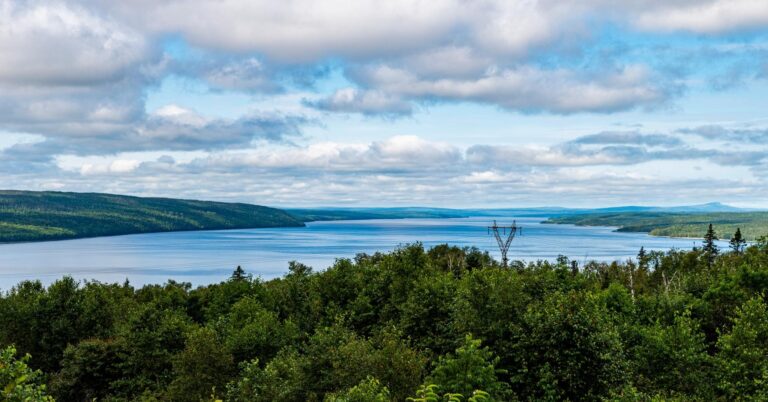
Hike This: Lakeside Trail in Gander, Newfoundland
Welcome to Gander’s Gem of a Hike Tucked just minutes outside Gander, the Lakeside Trail is a 7.1 km forest-and-lakeshore ramble that delivers solid scenery, a touch of elevation, and enough berries and birdsong to keep things interesting. It’s your classic “not too hard, not too easy” trail—ideal for a solid half-day adventure or a…
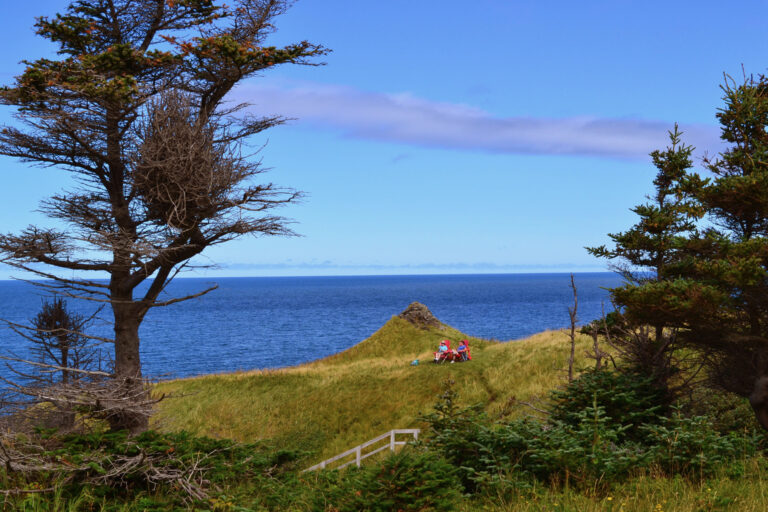
Best Hikes in Gros Morne National Park
Gros Morne National Park, nestled on Newfoundland’s west coast, is a haven for hikers. Whether you’re in search of gentle boardwalks, rugged mountain climbs, or coastal views, the Gros Morne hiking trails offer some of the most varied and awe-inspiring landscapes in Canada. This blog showcases the top 4-5 trails we consider the Best Hikes…

The Ultimate Guide to Getting to Newfoundland
Newfoundland and Labrador, Canada’s easternmost province, offers travelers a unique blend of rugged natural beauty, rich history, and vibrant culture. Planning a trip to this captivating destination involves understanding the various transportation options available. Here’s a comprehensive guide to help you navigate your journey to Newfoundland. Ads are how we keep our blog free for…
